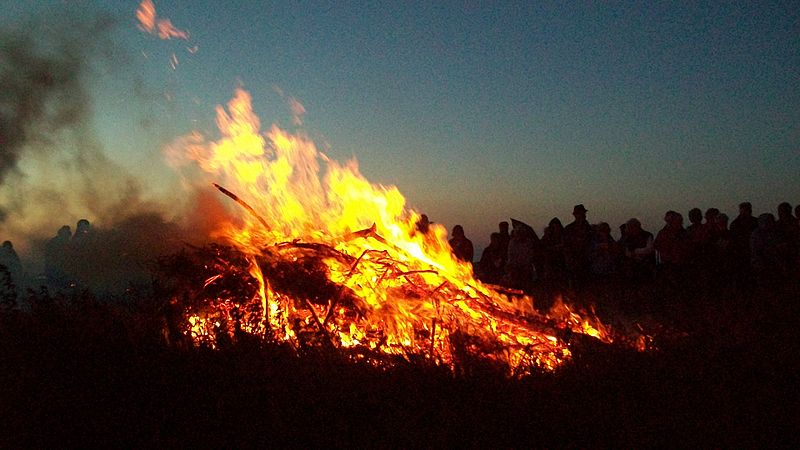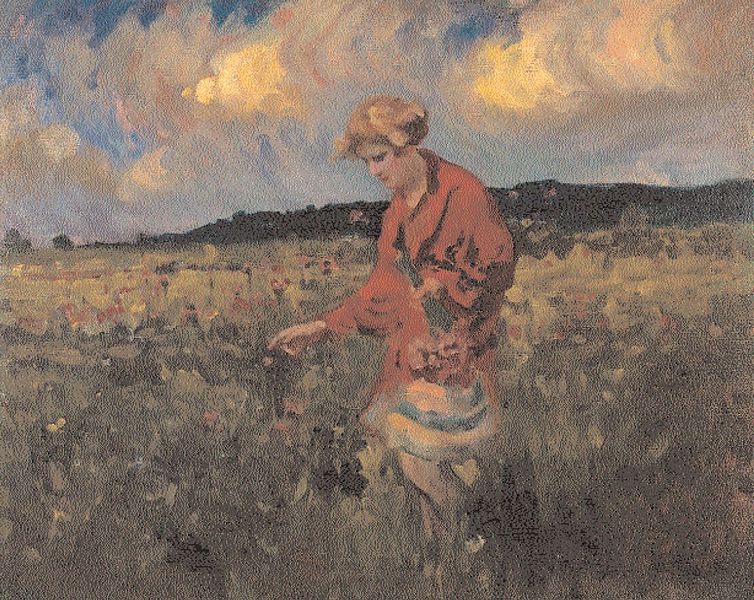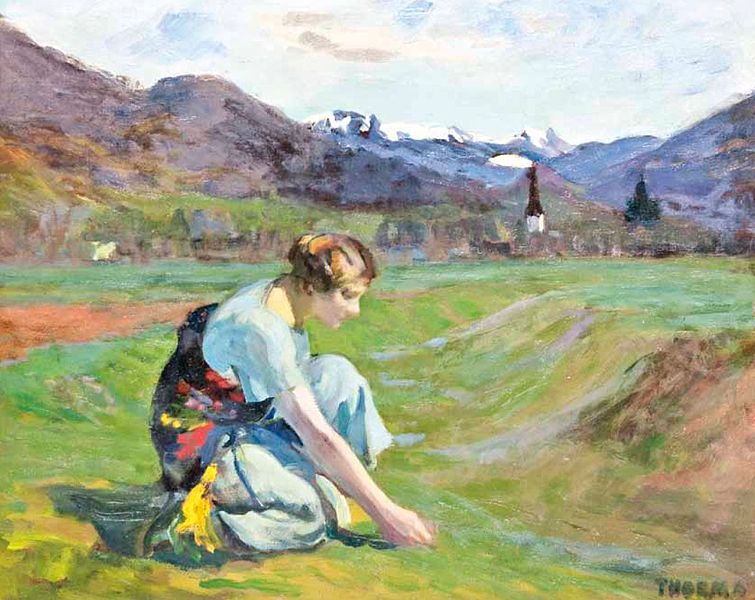In summer does the earth sleep, in winter does it wake. Them who judge by outer appearance may think the opposite true, but in summer, the fire of the earth is upon the earth, because it has come to meet the fire of the sky, which is at its most intense in midsummer. Then is the earth asleep, for its fire is all on its surface. We know this ourselves, for we are nature, and are more alert in winter and drowsier in summer.
So spoke the old lady, explaining the significance of St. John’s day as she picked rosemary, adding it to a basket of hypericum and elderberry with which she would fumigate the house of her interlocutor, a young, pregnant woman.
The concept she was elaborating also occurs in Christian esotericist Rudolf Steiner’s work, but wrapped up in his own mythology and system, and I have found it in a reader’s contribution to the 1859 New England Farmer, in the context of a description of Portuguese agriculture: “All nature sleeps in summer; the earth dries up; every green thing withers.”

In a separate basket the old woman kept perched on the arm of the younger, she collected seven plants for a particular operation which survives mainly in the Northwest corner of Spain, Galicia, but is also sometimes practised elsewhere. The plants used vary depending on location, but might include walnut leaves, elderberry, chamomile, pennyroyal, mint, rosemary, vervain, fennel, and fern. These the old woman would leave soaking overnight with the water from seven springs. The number seven is significant to St. John’s Day, with rituals like the jumping over a bonfire seven times, or leaping back-first over seven waves in the sea.
“The fire of the earth is upon the earth. Therefore the bloom of these is a healing to the nations,” she concluded. This the young woman recognized: “On either side of the river, there was the Tree of Life … and the leaves of the tree were for the healing of the nations” (Revelation, 22:2).
“That’s from the Bible.”
“Yes. Today the baptiser was born. Today we remember the waters of the river and the leaves they souse. The living waters and Tree of Life; the river Jordan and the Christ.”
Now came a reproach, “You have been to see the palm-reader. You visited her before me.”
“My sister took me. I didn’t want to. She doesn’t really read palms.”
“No, quite right. She leaves an egg in a glass overnight and in the morning predicts the future by the shape of the goo. Much better.”
“She said … Well, the yoke broke. It’s a bad sign.” Continued the young woman, putting a hand on her swollen belly.
“A bad sign for her if her hand shakes when she cracks an egg. Not for you. Put these things out of your head.”
“You don’t believe in her arts? But you’re a witch as well.”
“Today the baptiser was born. The water that baptises the old ways also washes the dirt off them. Don’t expect to see other than dirt when you go looking at dirt.”
In Spain, as in other countries, St. John’s Day, June 24th, is a high-point of medicinal magic; the assembling and sealing of diverse ointments and oils, gels and gums, to be used throughout the year. Shortly before the great emptying of the countryside, a young woman from a small Castilian village, pregnant and unmarried, visited two “witches” on this day. One gave her bad omens, the other good. The first was wrong, the second right. Her baby was born shortly after, healthy, and the young woman learnt something about faith and good news.
If rebirth corresponds to the dawn, we might imagine that the full bloom of maturity, in which forms are at their clearest, rendered in the most direct light of the sun, corresponds to midday. Calendrically, the year’s midday is the summer solstice, St. John’s. And yet, the Ascension is not celebrated in summer, but spring. This is because spiritual realisation retains its anchor in the earth, in the body, even as it attains to the transcendent.
Dusk and autumn represent the deathly entry into contemplation and world-denying discipline, the cross; midnight and winter are the absorption and epiphany of spiritual depth, the three days in the tomb; and dawn and spring are the return to the world, the resurrection. In fact, if birth occurs in winter, at Christmas, we may understand the contemplative absorption of wintery darkness as a reconnection to the infant self, as if the tomb Jesus is placed into and his descent to Hades was a womb-like state, a recovery of the primordial human origin symbolised by Christ’s rescue of Adam and Eve, recovering the purity of a state that then matures in spring. Then spring appears not like the birth of an infant, but of a man as man when he finds his bride, like the Bridegroom whose Resurrection and Ascension mark His union to his Church. As Walt Whitman puts it: “This the nucleus—after the child is born of woman, man is born of woman.”

Following this schema, midday and summer are the preparation for death, they are ordinary life as our starting point, Christ’s ministry and persecution, the scourging of the sun upon us so that we learn to take refuge, to subordinate the chattering mind like John’s decapitated head, but also the vital energies and heat with which we hearken to the call of religion and devotion.
Summer’s release of energy dries the ground and speaks like St. John the Baptist of the coming of a greater bloom: “He must increase; I must decrease. The One who comes from above is above all. The one who is from the earth belongs to the earth and speaks as one from the earth” (John, 3:31). Summer’s energies must decrease, return to the earth.
Summer is a herald, like John. Its heat can be harvested for healing later in the year. St. John is recognition of the Christ, and he is also ritual and piety which even Jesus chooses to submit to at this baptism. As the returned Elijah, he is one half of the Transfiguration, with Moses appearing on the other side of Jesus, the one standing for prophecy and summer, the other the law and winter, even as John’s baptism leads to the contemplative dimension, and the Mosaic ascent at Sinai manifests as a legal code.
The completion of the imitation of Christ is an invisible fifth season, like an axial point in between the four arms of the cross, the quintessence (literally meaning ‘fifth essence,’ quinta essensia) and is celebrated at spring as a final spiritual maturing that retains the vitality of rebirth. For this reason, the Davidic king in the Psalms is principally identified with the morning star, the east, and springtime is closest to providing an image for the Edenic state of nature.
Like the Tree of Life which will give fruit all-year round, the fifth season unites the others in a supernatural spring-like fertility which we must learn to discern throughout the year’s oscillations.






